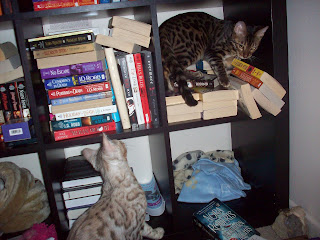While last week we talked about how we develop our characters, this week the question asked was how we do our research.
I don’t know if you know, but I write weird stuff. I don’t write normal, humans living ordinary lives. My book is all about spies and assassins and psychic powers. And through the vein of it all, I love science and adding a scientific spin on the paranormal.
My research involves science textbooks and Googling about psychic abilities and various uses of equipment. But mostly, I make it up. That’s the thing when you write paranormal, you can use your imagination to create things. Like copying memories from one person and transferring them into another.
What I write, there isn’t tons of research out there for (sometimes, none). I have been known to look up fighting techniques, however, and watch youtube videos of it, studying the way the fighter moves. I don’t tend to mention real places either. Why? Because I fear those details that need to go into the story to make it real for readers. If it’s a real place, especially one I’ve never gone to, which less face it, is everywhere, then I know I’ll mess something up. So what did I do? My characters live on the mountains. Granted, in book2 they do go to town, but it’s not a real place. I can make up whatever I want and no one can say ‘hey, you wrote that wrong’.
All in all, there are layers to researching. I Google (my main source to the wacky information you can’t ask someone out loud), but I also watch movies (fight scenes) and read other books. In the end, it all helps those puzzle pieces fall in place.
Check out how my other friends do research: Danie Ford Emma G. Delaney Kimberly Farris Kristen Koster













